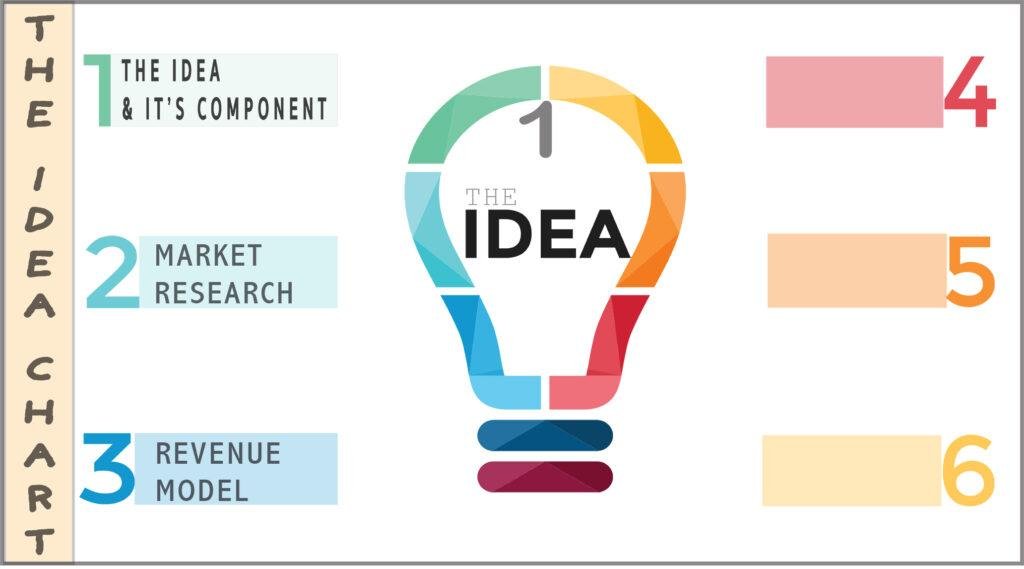- Idea To Profit Series: The Ultimate Guide
- Idea To Profit Series: The Idea And It’s Components
- Idea To Profit Series: Market Research
- Idea To Profit Series: Revenue Model
- Idea To Profit Series:Unique Selling Proposition
- Idea To Profit Series: Testing An Idea
- Implementation, Next In The Idea To Profit Series
Idea to Profit: Market Research
In the first component of the idea to profit series, we refer to market research and why someone starting a new business or turning an idea into a business would want to do one. In this installment of the series, we are going to delve further into market research and why it’s a good idea to spend the time doing one.
We should not underestimate the importance of market research because, as we’ve already mentioned, it can save time and effort when making decisive decisions about a business. Besides its timesaving benefit, there are other factors to consider that would make investing valuable time doing this study relevant. For instance, this process will also prepare a newly formed business for roadblocks and risks that may arise in the future (more about this below.) View market research as giving a business, new or in business for decades an edge, whether competitive or operational. It’s also not uncommon to view market research as a blueprint for achieving success with a business.
7 unmistakable reasons market research is so valuable
1. It helps to recognize a target market
Who would buy a product, or use a service and why? This is the core premise of identifying a target market. Most businesses want to believe that anyone and everyone is their target. With that approach, businesses who adapt to this ideology waste their marketing dollars. In reality, every business have niche, a segmented market for a particular product or service. Targeting that specific niche means it’s more likely the business model being used will achieve the desired result.
2. Market research helps to proactively manage opportunities, perceptions and problems
The value of market research is the acumen gained from strategic research. It allows insight into opportunities, perceptions, as well as potential problems that may arise.
Regarding opportunities. Market research can unfold information about competitors, demographics, customer relations, and, even more relevant, the needs and wants of potential customers.
When considering perception. It is the ultimate method for building relationships between customers and a business. For instance, how customers feel about a brand is invaluable. By understanding the emotional connection to a product or service, a business can determine how to adjust or adapt. This consecutively Influence customers’ expectation and buying decision.
Then there are the potential problems or challenges. Market research offers the opportunity to see probable challenges that may emerge. Imagine that a new business envisions one approach to reach prospective customers, but because of market research, realize a desired approach wouldn’t reach the intended audience. Challenges could range from brand recognition, demographics, bad perception, and more.
3. Market research decreases business risks
A part of the reason many potential business ideas don’t move from paper to reality is the risk. Some don’t want to risk their limited capital, and possibly their valuable time. One of the major reason to conduct market research is to lessen potential risks. Through analysis, it’s possible to avoid costly mistakes, forecast unhealthy changes and create the right environment to achieve success.
While perfection is a myth, with market research, it’s possible to enhance the approach, analyze costs, and make informed decisions and choices. Laying the groundwork for an almost perfect business model.
4. Effective marketing happens because of market research
Because of steps taken to identify a target audience, and manage issues that may occur, such as negative perceptions or unexpected problems, marketing efforts will be more effective.
Effective because a business can produce marketing materials that’s targeted. Also, they will know what approach will work and what will not.
With marketing, words, and images matter. The right text, with the right image, can influence and produce optimal results. Effective marketing applies to all aspects of a business, even if the business is new. It doesn’t matter if the content is on a website, a brochure, or business cards. Compelling marketing matters.
Because of market research, a new business will know where to find the audience already identified. As an example, if it’s determine the audience a business wants to reach doesn’t frequent Facebook, it would make sense to not spend any of a marketing budget advertising on Facebook, right?
5. Surpass competitors with market research
Knowing who competitors are, what they are doing and how they are doing it is integral to the success of a business. A new business would want to know what the competition is doing because it is another factor that will influence how to promote a product or service.
Marketing isn’t the only benefit of understanding competitors. A new business will want to understand the strengths and weaknesses of their competition. This knowledge would help to know what does work, but can be enhanced, or what doesn’t work.
Yet another benefit is a recovery strategy. Companies pivot, but the pivot should never the focus. The strength and outcome of the pivot is what’s paramount. Understanding a competitor’s recovery strategy can help a new business in the same field. It allows that new business to analyze the outcome learn what to do or what not to do.
Finally, there is the ultimate reason any business would want to use market research. Surpassing the competitor. Wanting to beat the competition is an important aspect of any business. This happens not just by understanding the target market needs and fulfilling those needs, but by standing out and doing a better job reaching that market. The term survival of the fittest comes to mind when thinking of the value of market research and wanting to gain a competitive edge.
6. Market research allows a new business to set comprehensive objectives.
Like most things in life, you can’t get far without specific goals. With a business, whether new or in business for decades, having preset objectives or goals is germane to the success and survival of the business.
These objectives are multi-layered because a business must consider its growth and sales to remain viable. In order to know if a business is profitable or if its goals are achievable, market research is necessary. Envision a business target market and current customer base. Market research enables that business to see its current customer base and compare it against its target market. The goal is to determine the level of growth, whether through sales and or new customers.
7. Effective problem resolutions happen because of market research
Most businesses have moments where a decision can be a critical point. The pivotal point can mean having the right information on hand to achieve the desired outcome. That information could be about a competitor, the industry, or current and potential customers. Market research contains the information needed for sound problem solving. Not having one accessible can be detrimental. Decisions made without the right data can affect a business negatively.
Methods and Processes of a Market Research
We’ve identified the importance of doing market research. Without a doubt, it is critical to running a business effectively. Without one, achieving success with a business becomes a hit-or-miss process. Now let’s explore the methods for doing a market research before exploring the process.
The Methods
There are various methods for doing this type of research. However, it’s important to keep in mind that there is only one variable these methods have in common. That one variable is the customer, or client, or target audience. It’s their thoughts you want to extrapolate base on the questions asked.
Regardless of the chosen method, always keep in mind that the aim is to get into the mind of those who are the target audience.
There are six methods for conducting a market research. We consider these methods the primary method of gathering information. In this post, the focus will only be on four of the methods. The reason to not focus on the additional two methods? They work best for businesses already established.
This post is about turning an idea into a profit or starting a business. We will focus on the best methods with that in mind.
1. Surveys
This is a simple, yet effective, method for collecting information. Used correctly, a new business can easily analyze the information to learn more about an intended audience. Surveys come in many forms. It can be online, paper, or by phone. These days, some view the phone process as obsolete, but if there are customers already in place, then a personable approach to getting feedback will probably be more effective.
2. Focus groups
This method is useful if a monetary resource exists. It is a precise approach that would involve recording the questions and answers. Or if it’s a product recording their thoughts or reaction. A budget for equipment such as a camera, recording equipment, and space for conducting these sessions would be necessary.
3. Interviews
Similar to a focus group, but more of a one-on-one approach. The premise would be the same for each individual as the focus or survey method. A downside of this method would be scheduling each subject individually. This method could be in-person, by phone or via Zoom or any of the mediums available today to talk online.
4. Observation
A very outdated method that involves observing the competition, making note of what’s being done right and wrong. It would require finding others willing to enter the competitors’ store or purchase a product to observe activities, behaviors regarding service and quality and distribution with a product.
Just to mention, the other two methods would require asking current employees key questions, and also a trial-and-error approach. Trial and error involves doing something different and observing the response or the result.
The process
Now that we’ve established the methods, let’s launch into the process. There is a four-step process for conducting market research. We highlight each step below.
Step 1 – classify the target market
The first step for doing market research is identifying who the target market is. Who are the ideal customers? What do they have in common? Be as specific as possible, generalizations would not work when doing market research.
A target market shares common traits. For instance, their demographics may be similar. Their age, gender, income, or location are similar. A target market can also have psychographic traits in common, meaning they share interests, or like the same things. Another consideration would be specific types, such as employees or employers.
If the goal is to target multiple markets, segmentation would be necessary. Segmentation is separating the target market base on similar traits or characteristics.
Step 2 – Research the target market
What’s the size of the target market? This is the one question to answer in this process. If a target market isn’t big enough to generate continuous profit and preserve a business, then it makes sense to change the objectives of the business or possibly abandon the business idea.
Using the demographics and psychographic traits already gathered, it’s time to confirm that a market exists for the idea.
Without a doubt, this process involves research. It’s analyzing the industry by using a secondary method of researching the market, which is reading reports, gathering information from sites such as the U.S. Census, or Bureau of Labor Statistics. It’s also about reading trade publications or any publication that offers insight into the target audience.
The goal is to gather as much information as possible about the intended audience.
Step 3 – Approach the target market
The methods for approach were just shared. Depending on the goals, either adapt one method mentioned, or choose a direct approach and reach out to the potential customers directly. We did not mention this approach in the methods outlined above because it’s not typical to approach prospects directly. However, it is said that a direct approach may be more beneficial than any survey or phone conversation can be. How critical the choice is depends on the business idea and aim.
Step 4 – Document the results
This last step can be as easy as reviewing the notes taken along the way and forming a conclusion based on findings. It can also be complicated, especially if the goal is to find investors. In which case, a market analysis would be necessary.
Keep in mind that the information gathered can be used again and again to make informed decisions. It’s imperative to document the findings, to allow referencing the data as often as needed to make smart decisions about a business.
There are resources available online that offers templates for documenting the conclusions of a market research. In addition. There are applications or software that will also make the documentation process less burdensome.
The do’s and don’t of a startup doing market research
Its clear market research is a powerful tool for building a business. However, when that business is just launching, every approach matters. Conducting a sound research matters too. In order to take advantage of this tool, a tool that can help a business get ahead and say ahead. It’s also important to know what to do and what not to do. As a new business wanting to make strategic moves that produce successful results, is the aim. Any advantage of achieving success is worth knowing. Keeps these suggestions in mind as you build the research.
Do – Define your objectives
A market research should lead to specific answers to questions or specific results that are clearly defined. We mention earlier in this post generalizing or being ambiguous will not work when conducting a market research. From the onset, the objectives should be clear.
DON’T – Research for the sake of doing research. It would be the wrong approach. Remember, a research should always have clearly defined objectives.
DON’T – Ignore the relevance of choosing the right method for researching. Would a primary method, or a secondary method, provide the information you need? Or would a combination of the two generate a better analysis?
DO – Consider the method before beginning the process. The right way of conducting a market research can produce the right results that will positively affect the success of a new business.
DO – Pay attention to the questions if using a primary method. Each question should have one aim.
DON’T – Add a part b by including “Or,” and “If,” The question should be direct, the answer should be direct. Remember to keep the aim in mind.
DO – Keep accessibility in mind. If using an online survey. A website link to a survey should be user-friendly and easily accessible.
Summary
As we progress through this series, the integral steps for turning an idea into a profitable business will unfold. We’ve already shared the components as an introduction and this post represents the next step. When there is an idea on paper and the question is: What’s next? What’s next is to do the research. To see if that idea can be profitable.
In our haste to publish this series, we jumped ahead of ourselves and publish the type of business models before this post. In actuality, this post is the next step. Deciding on the business model follows.
While it certainly doesn’t hurt to think of the business model now, take a step back and do the work of determining if the idea is viable and if the market exists.
In the next post in the series, we are going to help you answer the question, what’s your unique selling proposition?













[…] Idea To Profit Series: Market Research […]